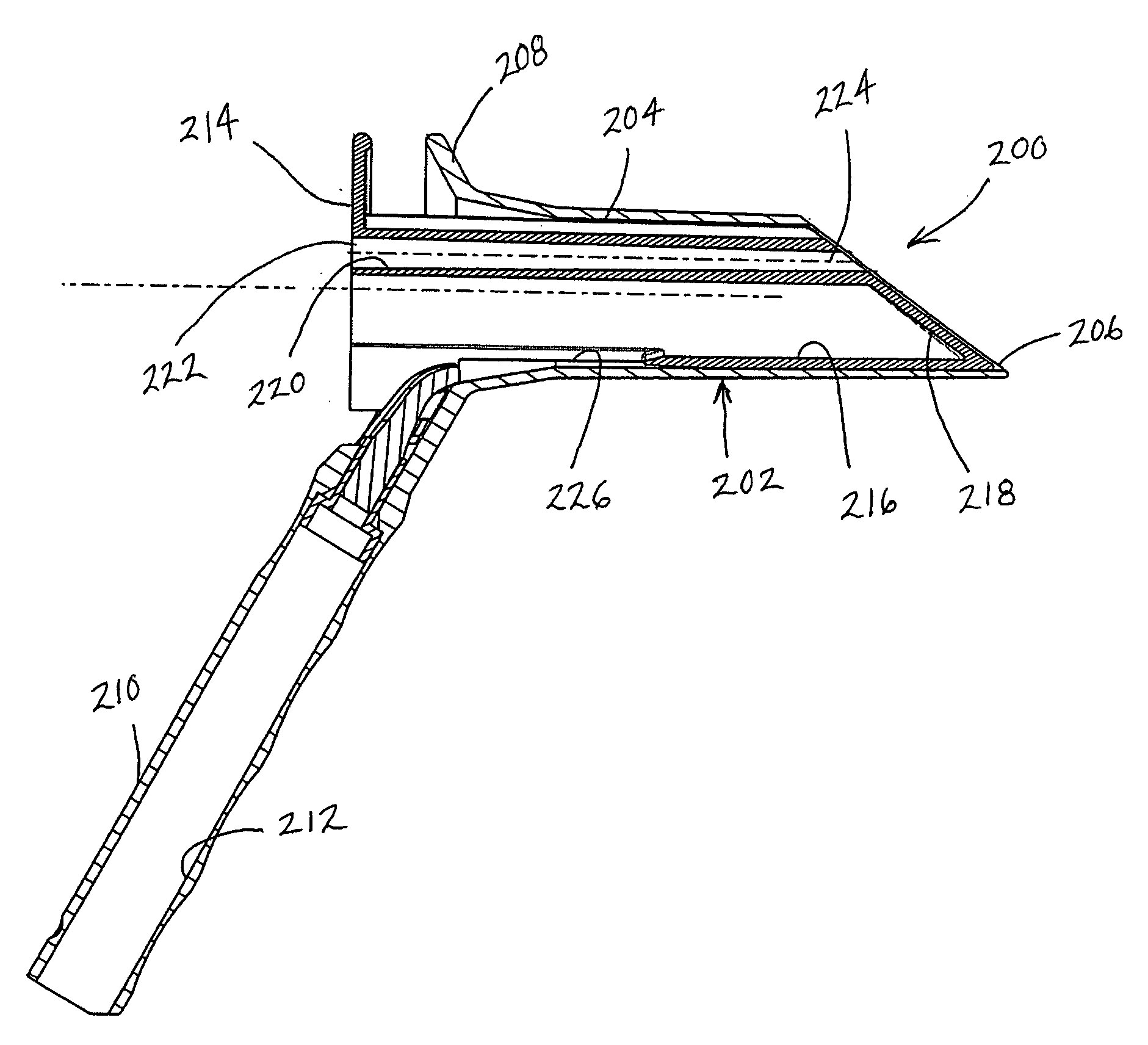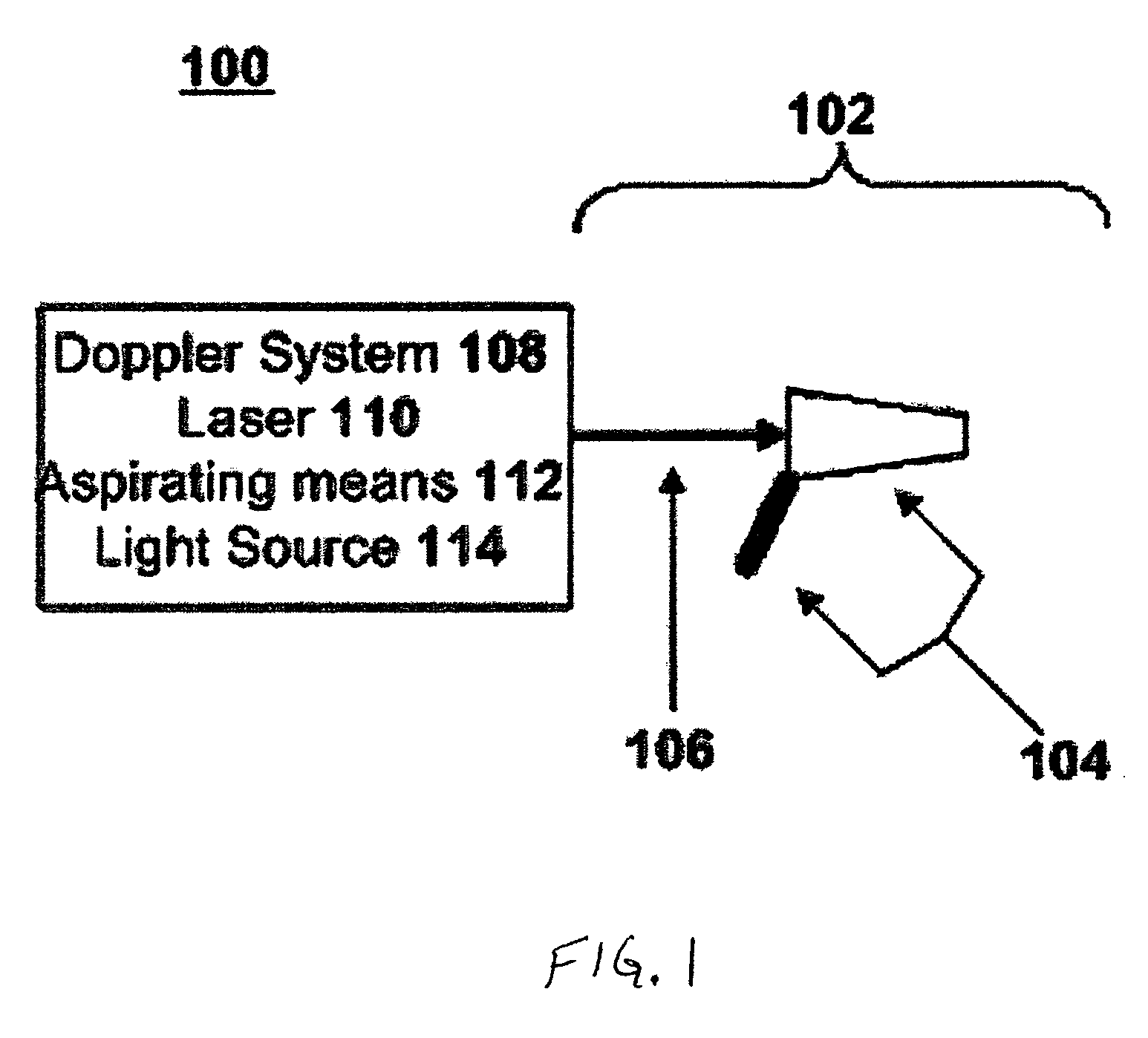System and Method for Treating Hemorrhoids
a hemorrhoids and system technology, applied in the field of system and method for treating hemorrhoids, can solve the problems of hemorrhoids, bleeding, itching and pain, and pressure on the walls of the rectum weaken the muscles that support the hemorrhoidal vessels, and achieve the effects of less pain or discomfort for patients, less complications, and less bleeding
- Summary
- Abstract
- Description
- Claims
- Application Information
AI Technical Summary
Benefits of technology
Problems solved by technology
Method used
Image
Examples
example 1
[0035]FIGS. 2A and 2B illustrate a disposable or reusable anus-scope 200 designed for easy passage into and out of the anal canal. The anus-scope 200 includes a scope body 202 defining a substantially cylindrical outer wall 204, an angled tip 206 formed on its distal end, and a radially extending flange 208 formed on its proximal end. As can be seen, the angled tip 206 is configured to facilitate ease of insertion of the scope into the anal canal. A handle 210 projects laterally from the proximal end of the body 202, and defines therein a channel 212 that is coupled to a light source for transmitting light therethrough to illuminate the interior of the scope body 202 and / or the treatment field at the distal tip 206 of the scope. An insert 214 is received within the scope body 202 and defines a side wall 216 that is slidably received within the cylindrical wall 204 of the scope body, and an angled distal tip wall 218 that is aligned and flush with the distal tip 206 of the scope body...
example 2
Method of Treating Hemorrhoid Cushions
[0036]The anus-scope 200 of FIGS. 2A and 2B is introduced into the anal canal above the hemorrhoidal cushion. The branches of hemorrhoidal arteries are detected by the ultrasound Doppler CW or echo-color-Doppler introduced into the body through the channel 220. The channel 220 is also provided for delivery of the optical fiber which, in turn, delivers laser radiation to the hemorrhoid artery. The illumination system introduced into channel 212 provides light for viewing and illuminating the anus-scope internally. The system is provided with a viewing window 207. Laser energy is applied through an optic fiber defining a size within the range of about 200-2000 microns for a preset time interval required for closing the blood vessel. The complete closure of the blood vessel is verified by using Doppler. A diode laser source is used for photocoagulation of the vessels. After completion of the procedure, the anus-scope is extracted.
example 3
Method of Treating Hemorrhoid Cushions
[0037]An anus-scope of the type shown in FIGS. 2A and 2B is provided with an energy source, such as a laser (e.g., a diode laser, such as a 980 nm diode laser), an energy application device, such as a fiber optic line connected to the laser, and receivable through the channel 220, a monitoring device, such as a Doppler probe, receivable within the channel 220, a light source connected to the channel 212, and an aspirator connectable to the channel 220 for aspirating fumes generated by coagulation of tissues. In the exemplary embodiment, the system and method are employed for Doppler or ultrasound guided thermal treatment of hemorrhoidal arteries. The anus-scope 200 is inserted into the anal canal above the hemorrhoidal cushings. The monitoring probe, such as the Doppler and / or ultrasound probe, is inserted into the channel 220 to identify the branches of the superior hemorrhoidal arteries. The scope 200 if rotated by, for example, manipulating t...
PUM
 Login to View More
Login to View More Abstract
Description
Claims
Application Information
 Login to View More
Login to View More - R&D
- Intellectual Property
- Life Sciences
- Materials
- Tech Scout
- Unparalleled Data Quality
- Higher Quality Content
- 60% Fewer Hallucinations
Browse by: Latest US Patents, China's latest patents, Technical Efficacy Thesaurus, Application Domain, Technology Topic, Popular Technical Reports.
© 2025 PatSnap. All rights reserved.Legal|Privacy policy|Modern Slavery Act Transparency Statement|Sitemap|About US| Contact US: help@patsnap.com



